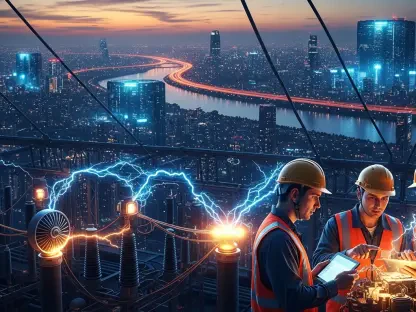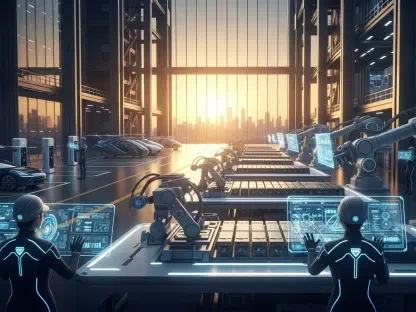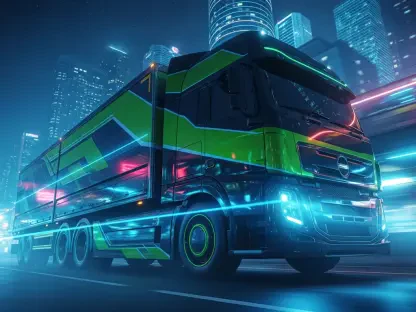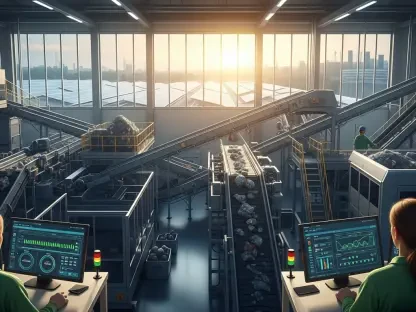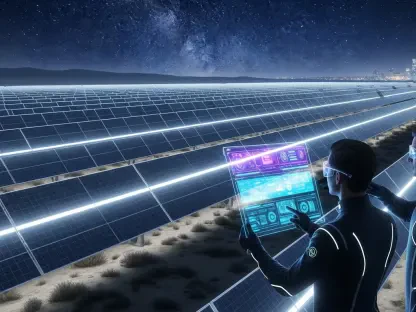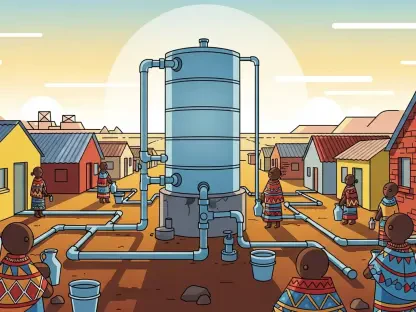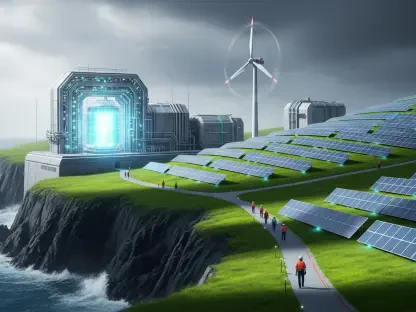In a world where every click, stream, and AI query relies on vast digital infrastructure, data centers have become the silent engines of modern life, yet their insatiable hunger for energy and water is sounding alarms across the United States. This raises a critical question: can technological progress coexist with environmental stewardship? As these facilities multiply to meet skyrocketing demand, their footprint—projected to consume 9% of national electricity by 2030—threatens to strain grids and deplete local resources. This tension between innovation and sustainability demands a closer look at how data centers can transform from resource drains into models of efficiency and community benefit.
The Hidden Cost of a Digital Backbone
Beneath the seamless convenience of cloud computing and AI advancements lies a staggering reality: data centers are becoming resource giants. Their electricity consumption is on track to double by 2030, according to the International Energy Agency, placing unprecedented pressure on already burdened power grids. States like Texas and Ohio scramble to keep up, but without substantial new capacity, utility costs for everyday consumers risk spiking, painting a stark picture of hidden trade-offs in this digital era.
Beyond energy, water usage presents an equally daunting challenge. With AI operations driving demand, tech giants have reported dramatic increases in consumption—some by over a third in just a year. By 2027, projections suggest data center water use could rival over half of the United Kingdom’s annual supply, igniting fierce debates in communities already grappling with scarcity. This resource tug-of-war underscores a pressing need for solutions that balance tech growth with environmental limits.
Why Data Centers Are Critical Now
Data centers stand as pillars of the tech-driven economy, powering everything from streaming platforms to cutting-edge AI models. Their rapid expansion is fueled by a national push for competitiveness, especially against global rivals like China, positioning these facilities as cornerstones of economic strategy. Yet, this growth comes with a heavy burden, as their resource demands threaten to outpace infrastructure capabilities, creating ripple effects across multiple sectors.
Community resistance adds another layer of complexity to this boom. While construction brings temporary jobs, long-term employment at these sites often remains minimal, leaving locals to question the value of enduring noise pollution and resource depletion for fleeting economic gains. This friction highlights a broader concern: unchecked expansion could deepen social divides and erode trust if benefits fail to reach those most affected by the facilities’ presence.
Challenges and Opportunities in the Data Center Surge
The explosive growth of data centers reveals a dual-edged landscape of hurdles and potential. Energy demands are a primary concern, with projections indicating a massive uptick in electricity use that could overwhelm grids in key regions. Policies in states like Texas, with SB 6, and Ohio, through HB 15, aim to fast-track infrastructure, but the risk of rate hikes looms large for residents if capacity doesn’t scale in tandem with consumption.
Water scarcity emerges as another critical issue, intensified by AI-driven operations. Annual reports from major tech players show consumption surges of up to 34% in recent years, with forecasts predicting staggering totals by 2027. Local outrage over depleted water supplies in drought-prone areas signals a growing crisis, pushing the industry to rethink how it manages this vital resource amid competing demands.
Yet, within these challenges lies untapped potential for reinvention. Data centers could pivot from being mere consumers to becoming hubs of sustainability by repurposing waste and integrating community-focused initiatives. This shift offers a chance to address resource strain while fostering goodwill, setting a precedent for how infrastructure can serve broader societal needs beyond its primary function.
Voices of Insight and Grounded Examples
Expert perspectives shed light on the path forward for this industry. Tim Ryan, a former Congressman, and Shawn Cutter, an energy entrepreneur, advocate for data centers to “stack functions,” delivering value to society beyond tech services. Their call for multi-purpose facilities challenges the status quo, urging a redesign that prioritizes both environmental impact and local engagement over pure profit motives.
Real-world efforts already illustrate this vision in action. Tech leaders like Google and Microsoft have begun harvesting rainwater on their sprawling facility roofs, capturing over 30,000 gallons from just an inch of rain on a 50,000-square-foot surface for cooling and irrigation purposes. Meanwhile, rural Ohio communities voice frustration over water overuse, but pilot projects there show promise—server heat is being redirected to warm greenhouses, directly tackling local food deserts while slashing waste.
These examples and insights underscore a pivotal truth: data centers hold the capacity to evolve into community assets. By learning from early adopters and amplifying innovative practices, the industry can address criticism head-on, proving that technology and sustainability need not be at odds but can instead build on each other’s strengths.
Practical Strategies for a Sustainable Shift
Turning data centers into sustainable powerhouses demands concrete, actionable approaches. One key strategy involves repurposing waste heat and CO2 emissions from servers to fuel industrial-scale greenhouses, enabling year-round food production in rural areas. This not only combats food insecurity but also transforms byproducts into resources, with excess CO2 potentially converted into clean hydrogen for backup systems or local vehicle fleets.
Another vital step focuses on water conservation through rainwater harvesting. Equipping the vast, flat roofs of data centers with collection systems can significantly offset cooling tower demands and support nearby irrigation, easing pressure on municipal supplies. Such measures, already in use by some industry leaders, provide a scalable blueprint for reducing environmental strain across the board.
Expanding community benefits forms a third pillar of this transformation. By integrating greenhouses and carbon utilization projects, data centers can create diverse job roles—from growers to technicians—while offering apprenticeships in data operations and energy management. Coupling these efforts with policy advocacy, such as leveraging the 45Q tax credit for carbon capture, ensures that redesigns prioritize long-term environmental and social goals over mere construction speed.
Reflecting on a Path Forward
Looking back, the journey of data centers reveals a complex tapestry of challenges and untapped potential that defines their role in the digital age. Their growth has tested the limits of energy grids and water reserves, stirring tensions in communities hungry for equitable benefits. Yet, amid these struggles, glimmers of innovation—through waste repurposing and resource conservation—offer a roadmap for change.
The next steps demand bold collaboration among industry leaders, policymakers, and local stakeholders to scale sustainable practices. Prioritizing investments in multi-functional facilities and supportive legislation could ensure that data centers not only power technology but also uplift the environments and people around them. This balanced approach stands as a beacon for how infrastructure might evolve to meet both present needs and future aspirations.


